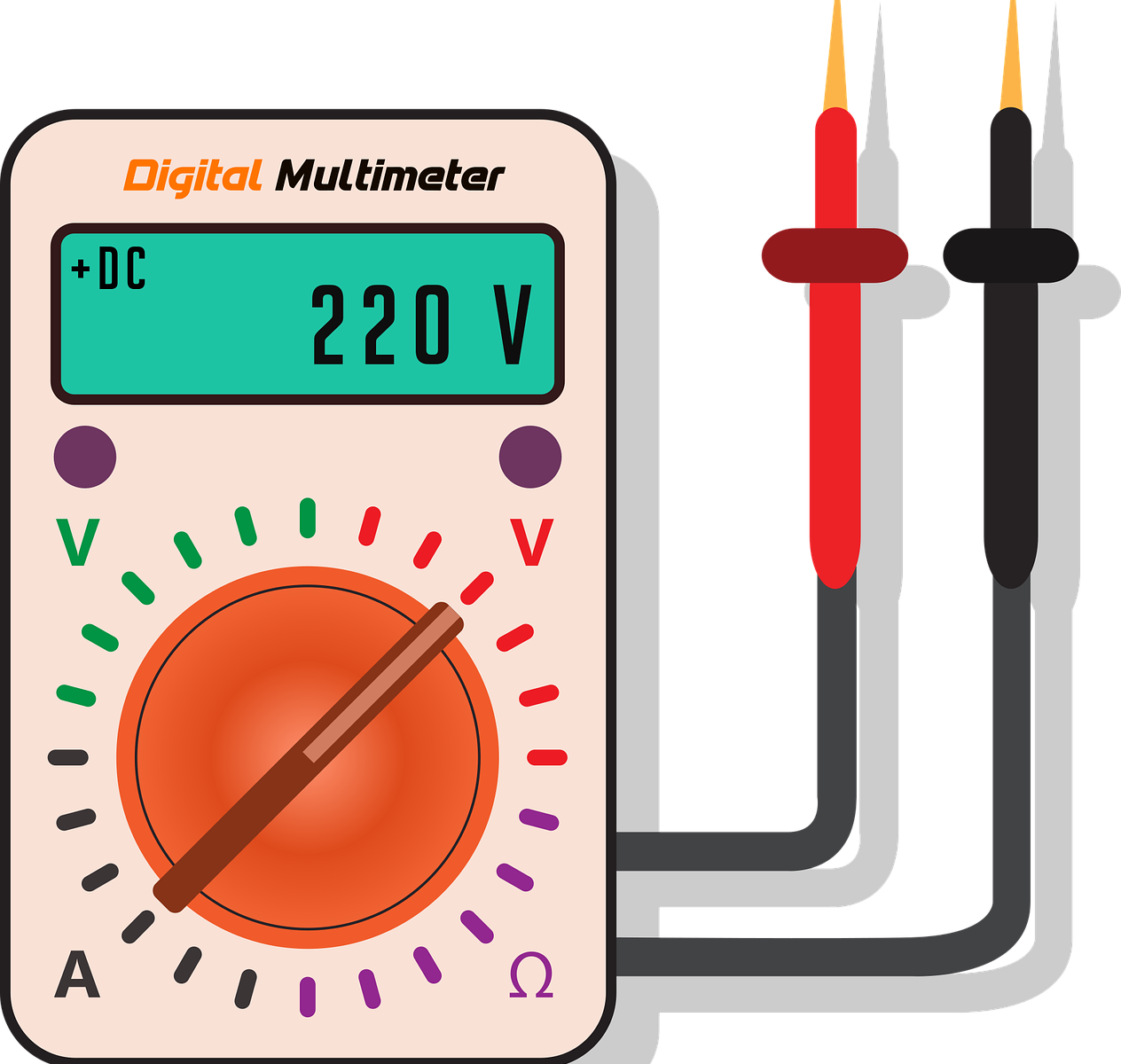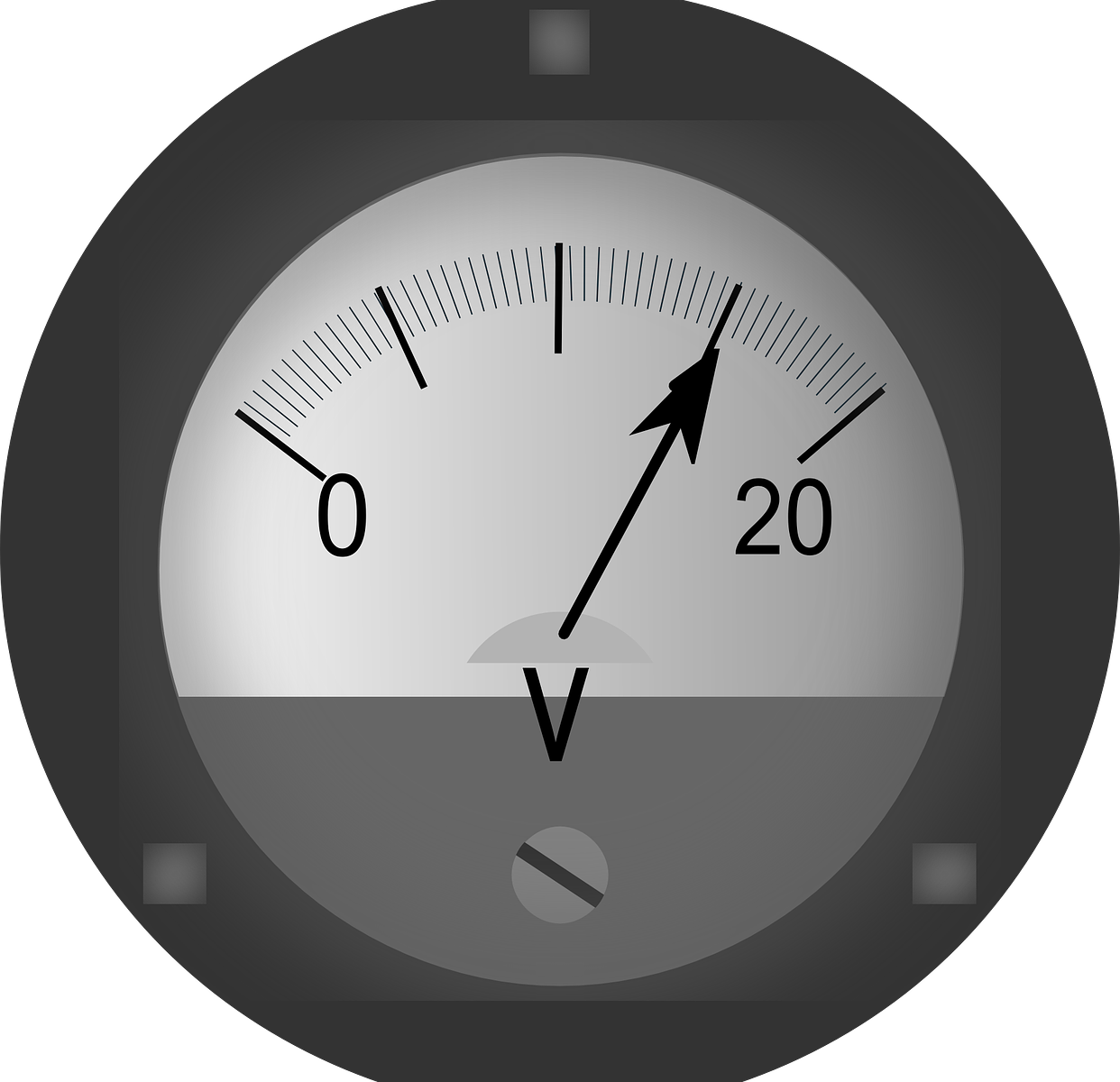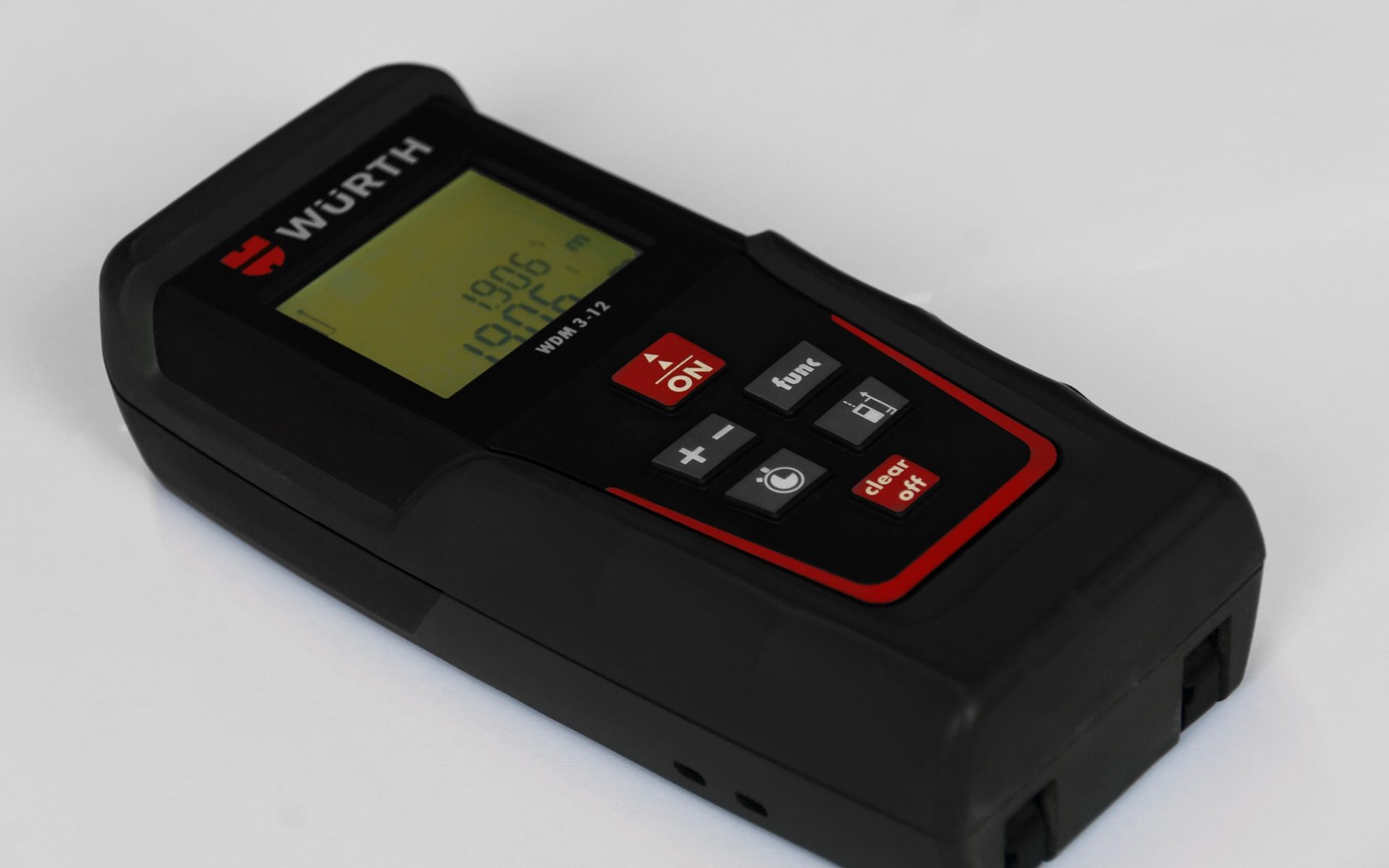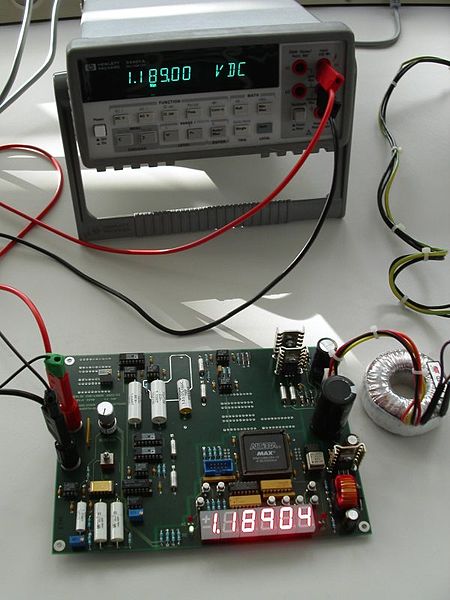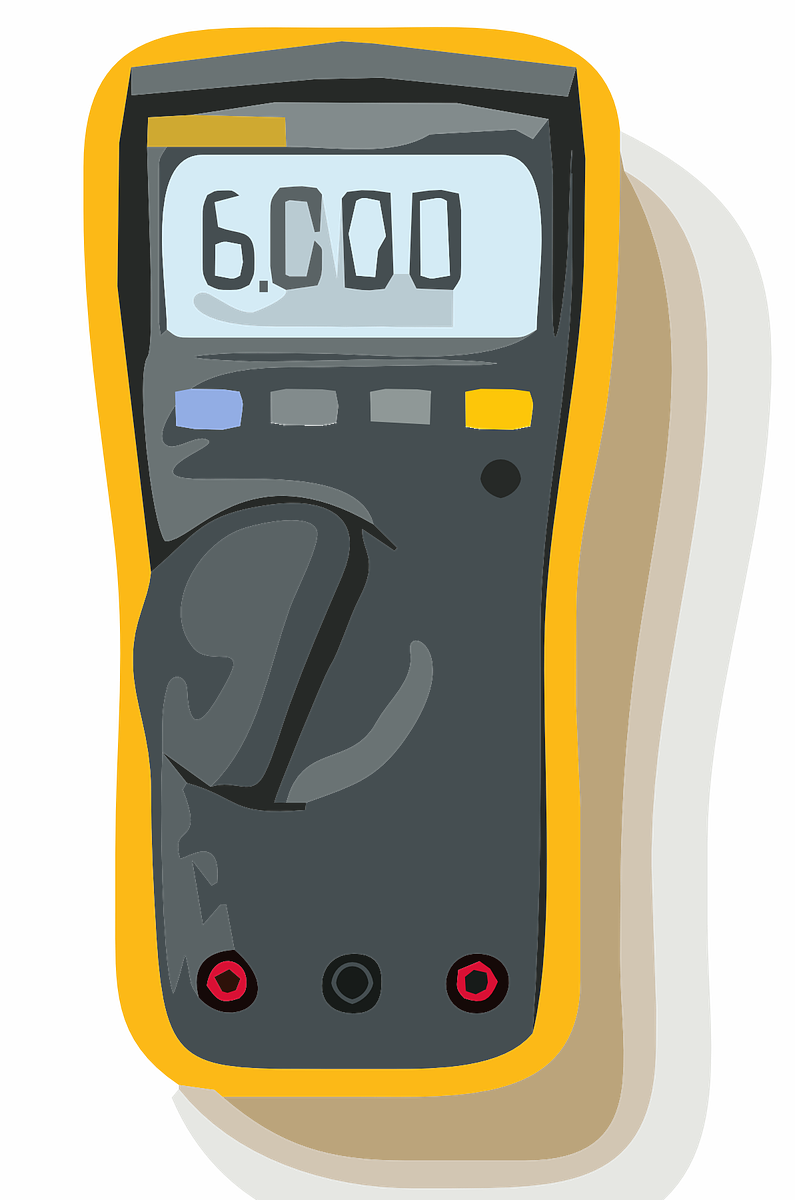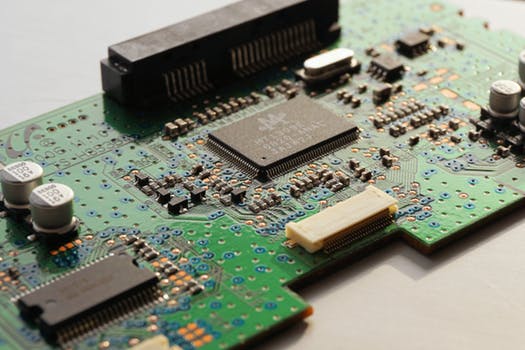Input circuits allow the input voltage to be stepped down by the ranging circuits, which could be a switch or automatic circuits. The ranging circuits also select the proper pulse stream from the clock and divider circuits. The test voltage is amplified and integrated with the gate pulse to produce a ramp voltage that will pass a selected sample of pulses. The number of pulses passed is related to the test voltage. These are shaped and counted, and then decoded to drive the seven-segment displays.
Amplified Resistance Measurements
The electronic meter is used for resistance measurements in a manner similar to the way it is used for current measurements. Using the same types of amplifier stages as was used for the voltmeters and ammeters, where a 0.5-volt-signal produced a full-scale deflection, resistance circuits can be set up using standard battery source voltages supplying current to standard high precision resistance circuits, whose values are known. When the resistor under test is connected into the circuit, it will change the total resistance, resulting in a change in current flow, which produces a signal voltage that is directly related to the resistance under test.
Amplified Current Measurements
To use the meter movement to make voltage and resistance measurements, the use of Ohm’s law is required so the current flow reading can be interpreted in terms of voltage or resistance. The amplified analog meter differs because the amplifier is voltage sensitive. As explained for amplified voltage measurements, a high input resistance is used with a range switch to tap down the voltage applied to the input of the amplifier stage. Since the amplified meter is a voltage sensitive device, the input circuit used for current measurements must convert the current to corresponding voltage levels and use Ohm’s law to interpret the related current flowing in the circuit under test.
Amplified Input Voltmeter
The higher the ohms/volt rating of a voltmeter, the less the voltmeter will upset circuit conditions. And the less circuit conditions are upset, the more accurate the reading will be. Most of the higher-end voltmeters and multimeters available now are rated at about 20,000 ohms/volt; more accurate voltmeters are rated at 100,000 ohms/volt. In some of the high-resistance circuits found in some present-day equipment, however, even a meter rated at 20,000 ohms /volt will greatly upset circuit conditions, and result in an incorrect reading. While a 100,000 ohms/voltmeter will give more accurate readings, even more accuracy is needed with some circuits. To overcome this problem, a device with a high ohms/volt rating called an electronic voltmeter was developed.
Voltage Measurements
With voltage measurements, the total resistance of the voltmeter must be considered. Reading an analog voltmeter scale is like reading an analog ammeter scale. Some multirange voltmeters have only one range marked on the scale and the scale reading must be multiplied by the range switch setting to acquire the accurate voltage reading. Other voltmeters have individual ranges on the scale for every setting of the range switch. When utilizing these meters, ensure that you read the set of values that corresponds to the range switch setting. Many digital meters also have range switches, but they may additionally have a special feature known as autoranging. This means you can either utilize the range switch or let the digital meter set the proper range by itself.
Current Measurements
Current-measuring meters are called ammeters. There are two ways of measuring the current flowing in a circuit. The first way is to open the circuit being tested and link the meter test leads into the circuit so the current flowing in the circuit flows in series through the meter as well. This is the in-circuit-type of ammeter sometimes referred to as an in-line meter. An external type of ammeter, known as a clamp-on ammeter, can be used without opening the circuit. The clamp-on ammeter has jaws that open and clamp around the sides of one wire in the circuit and measures the magnetic field that the current in the wire produces, to determine the current flow. The clamp-on ammeter is widely used and simplifies the measurement of current from one to hundreds of amperes. It is especially helpful for field testing and troubleshooting AC power lines.
Electromagnetic Meter Construction
Permanent Magnets
The moving-coil meter movement uses a horseshoe-shaped permanent magnet. The moving coil is placed within the magnetic field between the magnet’s two poles. However, if a simple horseshoe magnet were used, many of the magnetic lines of force would not cut through the moving coil. Magnetic lines of force travel the path of least resistance. Soft iron offers less resistance to lines of force than air. Therefore, soft iron pole pieces are attached to the poles of the magnet to concentrate the lines of force between the magnetic poles.
Enhancing Electrical Safety: A Comprehensive Guide
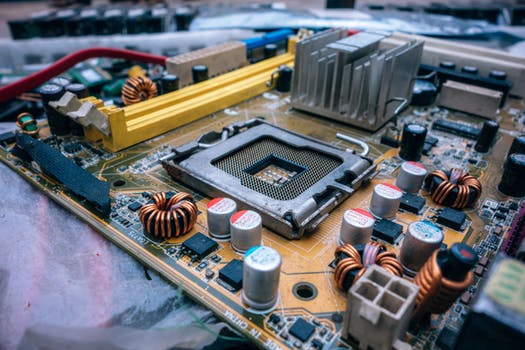
Our daily lives are dominated by electrical systems, which run everything from industrial machines to our houses. However, in order to avoid mishaps and guarantee personal safety, dealing with electricity requires extreme vigilance. Following safety procedures is imperative, regardless of experience level or do-it-yourself enthusiasm. This article explores voltage checks, critical safety precautions, and practical advice for navigating dangerous conditions.
Continue reading “Enhancing Electrical Safety: A Comprehensive Guide”Understanding Electromagnetic Current Meters

Electromagnetic current meters are novel instruments that make precise measurements of fluid flow in pipes and channels by applying the laws of electromagnetism. These tools are extensively utilized in various industries, including industrial operations, wastewater treatment, and water management.
This article will touch on the fundamentals of electromagnetic current meters, how they work, why they’re important, and the different versions available.
Continue reading “Understanding Electromagnetic Current Meters”Damping a Moving-Coil Meter
Damping
Keeping friction to a minimum permits measuring small currents, but creates a major problem when reading the meter.
